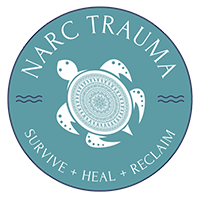Understanding Narcissistic Symbiosis

By Brenda Stephens, Licensed Professional Clinical Counselor
Trauma can deeply affect our relationships and self-perception, often making healing a complex journey. Among the many psychological concepts that emerge in this realm, narcissistic symbiosis stands out as a significant one. In this post, we will explore what narcissistic symbiosis means, how it manifests in individuals who have experienced trauma, and practical ways to navigate this challenging dynamic toward healing.
Defining Narcissistic Symbiosis
Narcissistic symbiosis refers to a mental connection between a narcissistic individual and another person who may exhibit codependent tendencies, where both parties derive emotional sustenance from one another. This complex dynamic often leads to blurred boundaries, where one’s identity becomes entangled with the other’s needs and demands. To better understand this dynamic, we need to explore the intricacies of emotional dependency and how it can distort individual self-worth.
At its core, narcissistic symbiosis can hinder personal growth. The narcissistic partner often requires constant validation, which can leave the codependent partner feeling drained yet compelled to provide that validation. This creates a cycle where both individuals become increasingly reliant on one another, resulting in a paradox where what we believe is “love” becomes a source of pain. Recognizing these characteristics is essential for anyone trying to unravel the complexities of their relationships.
Recognizing the Signs of Narcissistic Symbiosis
Understanding the signs of narcissistic symbiosis can be crucial in identifying unhealthy relationship patterns. Some indicators may include persistent feelings of inadequacy, a continuous need to seek approval, and an inability to express personal opinions without fear of conflict. These signs can be subtle and often mistaken for typical relationship dynamics, but recognizing them can lead to greater self-awareness.
Another sign is the tendency to lose sight of one’s own interests and passions. If you find yourself continually prioritizing your partner’s needs at the expense of your own joy and fulfillment, it may indicate a state of narcissistic symbiosis. These signs are critical conversation starters for anyone questioning the health of their relationship. By openly addressing these patterns, individuals can begin the journey toward reclaiming their autonomy and sense of self.
Moreover, emotional manipulation is a common feature in such dynamics. If discussions often leave you feeling confused or doubting your reality, it’s important to reflect on the relationship. Partnerships should foster growth and support, not confusion and self-doubt. By recognizing these signs, one can take the first step toward healthier emotional relationships.
The Role of Trauma in Narcissistic Symbiosis
Trauma, which many people in relationships with narcissists have experienced, often exacerbates the traits associated with narcissistic symbiosis. Individuals who have experienced trauma may unconsciously seek out relationships that mirror their past experiences, leading to dynamics that are both familiar and painful. Trauma creates a fertile ground for narcissistic symbiosis to take root, creating a cycle of dependency that is challenging to break.
Understanding the history of trauma in the context of narcissistic symbiosis is not only important for the individuals involved but also for therapists and caregivers. By considering a person’s background, we can better understand their behavior and emotional needs. Many people with codependent tendencies are not just seeking validation; they may be acting from a place of survival learned in their formative years. This creates an ongoing challenge, as healing from the initial trauma is often necessary to disengage from the symbiotic relationship.
Additionally, the emotional responses triggered by trauma can lead to maladaptive coping strategies that reinforce the symbiotic cycle. For example, the need to appease a narcissistic partner can originate from the desire to avoid emotional upheaval associated with past trauma. Without a conscious effort to unpack these emotional layers, individuals may find themselves caught in a repeating pattern that feels inescapable.
Impact on Self-Identity and Relationships
Being in a narcissistic symbiotic relationship can profoundly affect one’s sense of self and interpersonal connections. Individuals may experience a diminishing of their self-identity, often feeling more like an extension of the narcissistic partner rather than a whole person in their own right.
Furthermore, when personal boundaries are continually violated, individuals may retreat into themselves, fearing further emotional harm. This isolation can lead to a host of other issues, including anxiety, depression, and a feeling of being perpetually misunderstood. The impact of narcissistic symbiosis stretches beyond the direct relationship, often spilling into other friendships and family dynamics, creating a ripple effect that complicates healing.
As we unpack these effects, it becomes increasingly evident that addressing the issues stemming from narcissistic symbiosis is not simply about improving one’s romantic relationship; it’s about reclaiming autonomy and building a strong foundation for all future interactions. Reconnecting with and embracing one’s identity and understanding the nuances of these unhealthy dynamics is vital for recovery.
Strategies for Healing from Narcissistic Symbiosis
Healing from the effects of narcissistic symbiosis requires intentional effort. Setting boundaries is crucial; it allows individuals to gain control over what they will and will not accept in their relationships.
Seeking professional help from someone who understands narcissistic abuse (not just narcissism) can also provide guidance, validation, and accountability during the healing process. A qualified therapist can help those affected learn to reclaim their narrative, away from the scripts written by their partners or other unhealthy, toxic people.
Practicing self-compassion is an essential step in healing. It’s important to acknowledge one’s feelings without judgment and to give oneself the same kindness one would offer a friend. Engaging in activities that promote genuine joy and fulfillment can gradually shift the focus inward, allowing individuals to rediscover their passions and self-worth outside of the symbiotic relationship.
Finding Support in Your Healing Journey
Support systems are vital in the journey of healing from trauma and narcissistic symbiosis. Surrounding oneself with supportive friends and family can provide the emotional safety net that is crucial during this transformative time.
Support groups, both in-person and online, can provide validation and a sense of community. Hearing others share their experiences can make individuals feel less alone in their struggles. This communal understanding fosters a shared environment for growth and healing, where individuals can learn from one another and inspire strength in each other.
Additionally, educational resources ranging from books to podcasts can be invaluable tools in this journey. Being informed about narcissistic dynamics allows individuals to empower themselves with knowledge, transforming their perspective from one of victimhood to one of agency and compassion. With the right support and resources, breaking free from narcissistic symbiosis towards a healthier, more authentic self becomes a tangible goal.
Embracing Healing Beyond Symbiosis
Navigating the effects of narcissistic symbiosis in the context of trauma healing can be challenging, but understanding this dynamic is a critical step toward reclaiming one’s identity and fostering healthier relationships. By acknowledging the impact of past trauma and seeking supportive pathways to healing, you can find a way to break free from symbiotic patterns and embrace a more fulfilling life.







